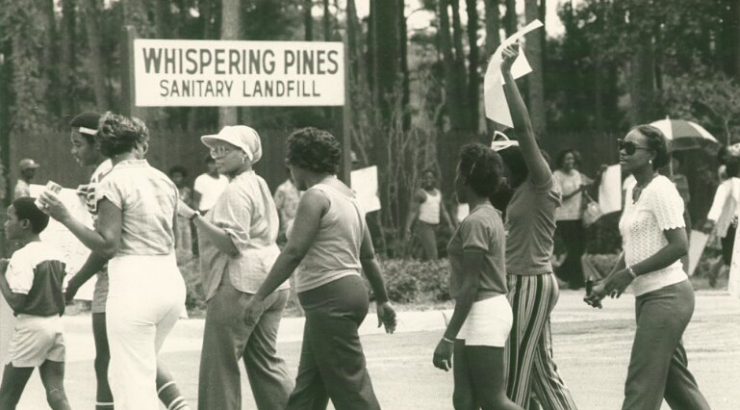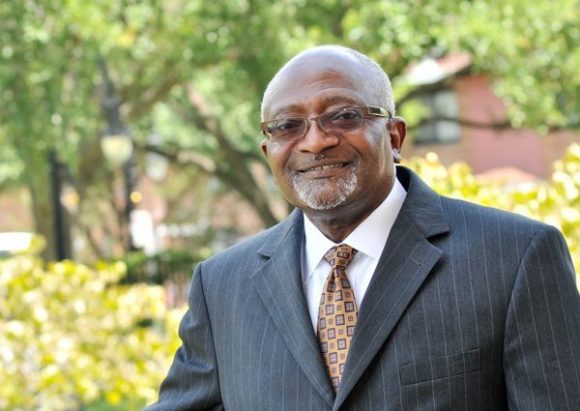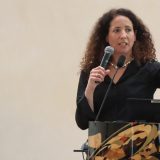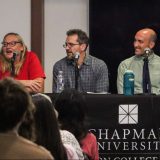
ETW: The Quest for Environmental and Climate Justice
September 30, 2021
 Dr. Robert Bullard, known as the “father of environmental justice” joined Wilkinson College of Arts, Humanities, and Social Sciences as the keynote speaker and special guest for their signature series, Engaging the World: Leading the Conversation on Environmental Justice (ETW), “The Quest for Environmental and Climate Justice.”
Dr. Robert Bullard, known as the “father of environmental justice” joined Wilkinson College of Arts, Humanities, and Social Sciences as the keynote speaker and special guest for their signature series, Engaging the World: Leading the Conversation on Environmental Justice (ETW), “The Quest for Environmental and Climate Justice.”
The award-winning author of eighteen books and co-founder of the Historically Black Colleges and Universities (HBCU) Climate Change Consortium currently serves as the Distinguished Professor of Urban Planning and Environmental Policy at Texas Southern University.
Dr. Bullard jumped right into this talk redefining the environment as where we live, work, play, learn, pray, as well as the physical and natural world. “Environmental justice is about human rights, about the right to live and work and learn and live in an environment that is safe, healthy and sustainable,” he said. “All people in communities are entitled to equal protection of environmental energy, health, employment, education, housing, transportation and civil rights laws.”
His passion for environmental justice all began in 1978 when he was asked by his wife, lawyer Linda McKeever Bullard, to help her collect data for the lawsuit, Bean v. Southwestern Waste Corporation.
“She said this company was trying to get a permit to build sanitary landfills in the middle of this suburban middle class black community in Houston, [Texas].” L. Bullard needed someone to research and put on a map all the locations of landfills, garbage dumps, incinerators, and solid waste sites and who exactly lived around those areas from the 1920s through 1978. It was the first lawsuit to challenge environmental racism using existing civil rights law.
“I did this study and what we [Dr. Bullard and his students in his research methods class] found was amazing, literally astounding. I didn’t know we would find this but five out of five of the city owned landfills, six out of eight of the city incinerators and three out of four of the private landfills were located in black neighborhoods in Houston, even though blacks during that same period of time only made up 25 percent of the population. Now that was an amazing finding.”
Although the waste management company won the lawsuit, this discovery prompted Bullard to begin a long academic and activist campaign against environmental racism.
However, Dr. Bullard pinpoints 1982 as when the environmental justice movement was officially born. In Warren County, North Carolina the government decided it was time to clean up contaminated oil that was dumped on the highways years prior. Over 500 demonstrators were arrested protesting the siting of a hazardous polychlorinated biphenyl (PCB) landfill. “Warren County was one of the poorest, rural, and one of the blackest counties in the state and they decided to put that waste [there]. That’s when young people, environmental activists from the civil rights movement, decided they were not going to take this.”
“[Dr. Bullard] presented indisputable evidence that not everyone has equal opportunity to live in healthy environments, and that racial/ethnic disparities in environmental conditions exist above and beyond socioeconomic status. What is more, he provided evidence that policies, both historical and contemporary, have directly created these disparities,” said Dr. Georgiana Bostean Associate Professor of Environmental Science, Health, & Policy.
Throughout his talk, Dr. Bullard presented maps, statistics and graphics showing national reports on the racial and socio-economic characteristics of Communities with Hazardous Waste sites (a 1987 case showed people of color made up one third of residents within a 2-mile radius of toxic waste facilities), as well as Why your Zip Code Matters, Where Diabetes is Most Prevalent in the U.S, Where Poor and Uninsured Americans live and more. All the statistics showed a pattern of how black communities around the country have a higher effective percentage rate in all these cases.
In the book, Race, Place and Environmental Justice After Hurricane Katrina, edited by Dr. Bullard and Beverly Wright, Dr. Bullard says, “In major disasters, the most vulnerable populations generally suffer the earliest and most damaging setbacks because of where they live, their limited income and economic means, and their lack of access to health care.”
According to Dr. Bullard, how the government responds to these disasters and climate change is dangerous to African American communities and things are not going to change unless there are policies put in place to address systemic barriers.
“Our culture tends to think of environment and natural disasters as “equal opportunity” or “colorblind,” in the sense that everyone is equally susceptible to disasters. Yet Dr. Bullard showed us, in no uncertain terms, that both how likely someone is to be impacted by certain natural disasters, and how easily they can recover from the impacts of a disaster, are a direct function of one’s race/ethnicity,” said Dr. Bostean.
Climate change will hit poor and people of the south the hardest with up to a 20 percent drop-in economic activity due to global warming by the end of the century, according to a UC Berkley study in 2017. “So when we talk about racism and how racism can make more communities more vulnerable, we can see this in terms of those built environments and lack of resources being pumped into certain areas in terms of flood mitigation, in terms of greening up communities and other kinds of mitigation. Environmental justice and climate justice is also about protecting the most vulnerable population,” said Dr. Bullard.
“Dr. Bullard opened my eyes to the racial disparities prevalent within the Environmental Justice Movement, and the most prominent predictor of a person’s health: their zip-code. These dialogues remind us of the work that still needs to be done to ensure equitable protection for communities disproportionately impacted by environmental threats,” said Creative Writing major and Environmental Studies minor, Amy Asmussen.
When asked what we can do as individuals to get involve and become advocates for these causes, he said, “I think it’s important that we identify local communities, we volunteer, we get do our research, get to know what’s going on locally and try to assist and support, because we all can assist and support for the greater good.”
Watch “The Quest for Environmental and Climate Justice” with Dr. Bullard.

